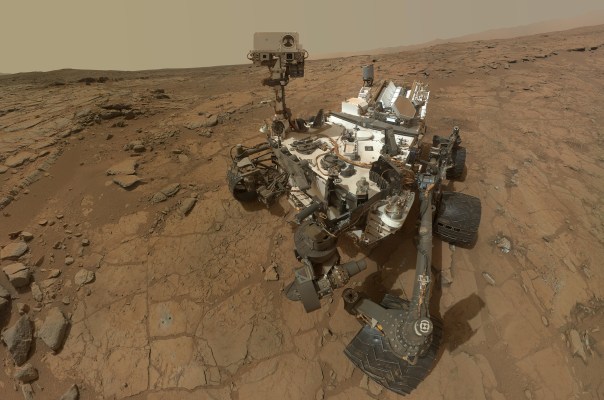NASA’s Curiosity Rover has detected high levels of methane output during its mission on the Martian surface, the New York Times reports. The discovery, found during a measurement taking on Wednesday by the robot and observed by NASA researchers, could indicate that microbial lifeforms may have taken up residence underground on Mars.
Methane is often present in higher concentrations in the air on Earth due to output from living creatures, which is why researchers are going to take a closer look and see if they can find any more corroborating evidence to back up the theory that the gas is due to output from subterranean Martian microbes. If all goes to plan, we should find out more about these follow-up observations as early as Monday, when researchers expect Curiosity to return the results of its new investigatory procedure.
Any measurable amount of methane detected by Curiosity would be a tripwire for Mars researchers, since the gas would likely have to have been produced recently by an organism if the reading is accurate, because otherwise it would’ve naturally broken down in a relatively short timespan into its component parts. That said, it’s worth noting that methane can be produced without any living organisms, and it could be gas long-buried and escaping to the surface through tiny cracks from underground reservoirs.
The NYT notes that this isn’t the first time researchers have detected traces of methane on Mars, but it is the highest concentration yet detected, and the Rover’s readings have been backed up by NASA’s Mars Reconnaissance Orbiter, at least provisionally. Remember this isn’t the first time we’ve had potential evidence of life beyond Earth, but so far, nothing definitive has been discovered that indicates Earth isn’t unique in supporting living organisms.
